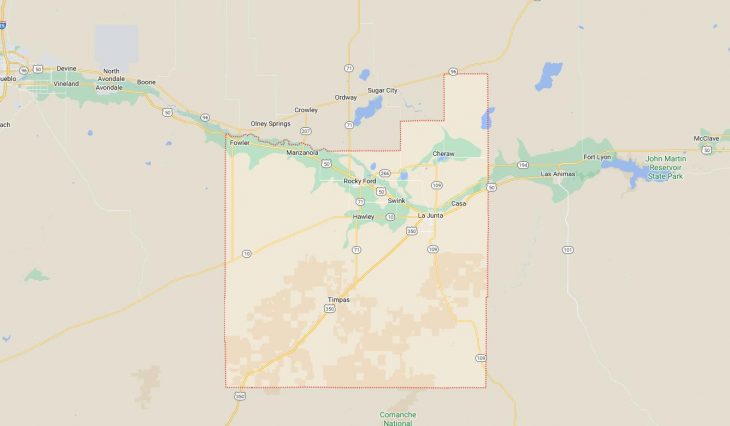Cities and Towns in Otero County, Colorado
Founded on 1889-03-25, Otero County is one of 64 counties in the state of Colorado. Historically, Otero County was split from Bent County. The city of La Junta is the county seat. With FIPS code of 89, Otero County has a population of 18,594 and area of 1,267.66 square miles (3,283 km²).
List of all cities in Otero County, CO alphabetically
| City/Town | Postal Code | Area Code |
| Bents Fort, CO | 81050 | 719 |
| Bents Old Fort, CO | 81050 | 719 |
| Cheraw, CO | 81030 | 719 |
| Fair View, CO | 81050 | 719 |
| Fairmont, CO | 81050 | 719 |
| Fort Bent, CO | 81050 | 719 |
| Fowler, CO | 81039 | 719 |
| Hawley, CO | 81067 | 719 |
| La Junta, CO | 81050 | 719 |
| Manzanola, CO | 81058 | 719 |
| North La Junta, CO | 81050 | 719 |
| Roberta, CO | 81050 | 719 |
| Rocky Ford, CO | 81067 | 719 |
| Swink, CO | 81077 | 719 |
| Timber Lake, CO | 81050 | 719 |
| Timpas, CO | 81050 | 719 |
| Vroman, CO | 81067 | 719 |














































